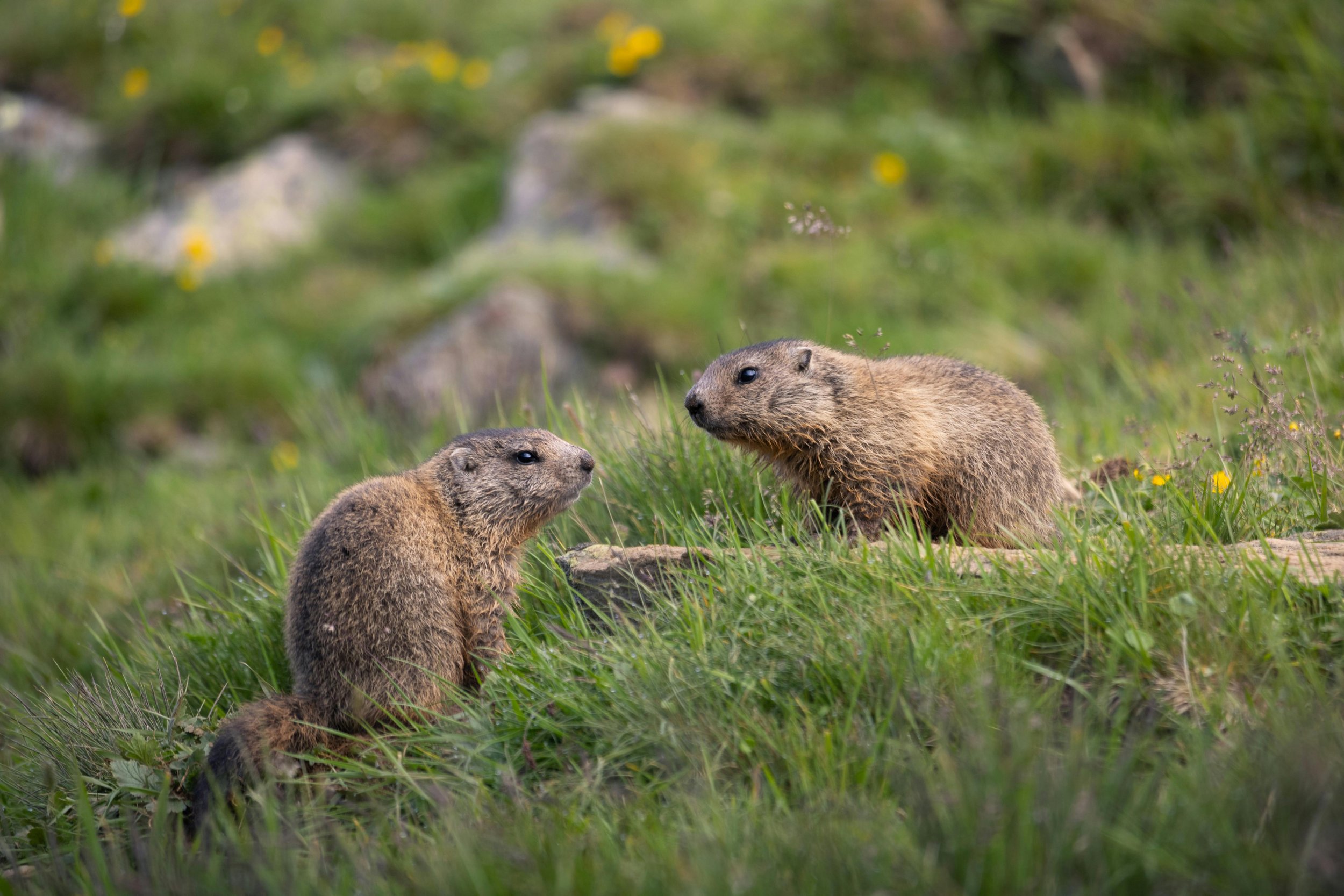
Marmot Fun Facts
The name for a group of marmots is called a Madness!
Marmots live together in colonies, with each family in the colony having its own territory.
Marmots are classified under the genus Marmota.
There are 16 different species of marmot, such as the Yellow-bellied marmot (Marmota flaviventris), the Alpine marmot (Marmota marmota), and the Groundhog (Marmota monax). There are also three known species of now-extinct marmot.
Marmots are often called Whistle Pigs.
Marmots will whistle as an alarm to warn others of predators or when they feel threatened by danger. Some species of marmots are said to have even developed their own “language”, using a different whistles to communicate a variety of information.
Marmots are relics of the Ice Age.
Marmots typically inhabit the high elevations of montane meadows and alpine tundra as they are sensitive to temperature change. They are frequently seen laying about on rocks in an act people refer to as “sun bathing”. Contrary to what the name might imply, it is believed this behavior it done to cool themselves down.
Marmots spend more than half their lives underground.
Unlike mice or bears, marmots are true hibernators. They spend anywhere from 7-9 months in their burrows, taking as little as one breath every few minutes.
Personal hygiene is a crucial daily activity.
Marmots partake in an activity known as “dust bathing” and have sections of their burrows specifically dedicated to doing so. Dust bathing provides several benefits, with the most important purposes being the removal of parasites and the scent marking of one’s territory.
Marmots are omnivores.
Grass, flowers, and insects are the most common food for marmots. Most prefer young and tender plants over any other kind, and will hold food in their forepaws while they eat. However, they will also eat bird eggs and, if in a dire enough circumstance, may even resort to cannibalism.
Kissing is used to keep aggression down.
Marmots are often seen “kissing” (which, in truth, is just touching noses) as a form of social interaction to help strengthen relationships between adult marmots or between parents and their pups. Marmots can be quite territorial, so this also helps them identify each other through scent to make sure each marmot is where they should be.
Marmots are the largest members of the squirrel family.
Depending on the species, a marmot can grow up to two feet long and weigh over 30 pounds! This extra heft does not keep them from being able to climb trees or even swim, though marmots prefer to spend as much time as possible on the ground.
